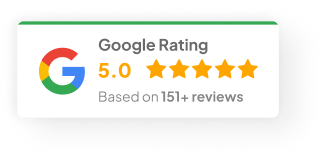07 Feb 25
https://www.google.com/?gws_rd=ssl What Does This Mean?
Ever noticed something weird tacked onto a Google URL—like this little guy: gws_rd=ssl?
You’re not alone. Honestly, most people never even see it. But when you do, you sort of tilt your head and go, “Wait… what is that?”
Let’s break it down in plain English. No jargon. No tech babble. Just what it actually means and why you don’t need to lose sleep over it.
First Off — The URL Itself
Alright. The full URL you probably saw was something like:
https://www.google.com/?gws_rd=ssl
The first bit—https://www.google.com—that’s just Google’s home base. You type it, you search, you get your cat videos.
The https part tells your browser, “Hey, this site is using encryption. It’s safe. We’re locking down your data so nobody can snoop.”
But it’s that gws_rd=ssl part that sparks all the head scratching. So here’s the deal:
-
GWS = Google Web Server. That’s the set of machines actually serving you Google’s pages.
-
RD = Redirect. Basically, it’s telling your browser, “We’re shifting you slightly to a different route.”
-
SSL = Secure Sockets Layer. This is the encryption layer keeping your search private.
So put together? It’s just Google saying: We’re securely redirecting your request through our servers. That’s it. Nothing shady. No malware. No secret tracking chip sneaking into your laptop.
Why Does Google Even Use This?
Good question. I’ve worked with web servers for years now, and these little redirect parameters serve a few behind-the-scenes purposes:
-
Force HTTPS security: Sometimes you might type just
google.com, and Google needs to make sure you end up at the secure version. This redirect helps make that happen. -
Server balancing: Google handles billions—and I mean billions—of requests per day. These redirects help spread out that traffic across data centres worldwide, whether you’re in Sydney, New York, or some tiny town in regional Australia.
-
Analytics and optimisation: Yeah, Google likes its data. They use info from these redirects to make sure things load fast, searches are accurate, and the user experience keeps getting better. Like, I remember around 2015 when they started aggressively shifting everything to HTTPS—it was largely driven by these kinds of backend changes.
Is This Tracking You?
Look—I get why people ask this. Random URL parameters often feel sneaky.
But no, gws_rd=ssl isn’t tracking you for ads or building some secret profile. Google already has better (and far more complicated) ways of collecting marketing data—this isn’t one of them.
This particular parameter is more about:
-
Security
-
Speed
-
Server routing
-
Load balancing
Basically: plumbing, not spying.
Should You Worry About It?
Nope.
Here’s why:
-
Google is trusted (well… depending who you ask, but technically speaking, yes). Billions use it daily without issue.
-
The SSL part means encrypted data — nobody’s peeking over your shoulder while you search for “how to fix a leaking tap at 2am.”
-
No malware involved — if you see this on
google.com, it’s just business as usual.
If you ever do see super long, weird Google URLs from unknown sources though—like in spam emails—then yeah, pause before clicking. But this particular snippet? Totally safe.
Why Does Google Even Need Redirects Anymore?
Honestly? Part habit, part complexity.
When you’re running a global platform like Google, with data centres all over the planet, sometimes you still need these little routing helpers in place. They’re like traffic lights on a busy intersection. Keeps the flow steady.
Even now, with better protocols like HTTP/2 and HTTP/3 in play, you’ll still see bits of legacy code like this. It works, so they keep it.
The Bigger Picture
At the end of the day, gws_rd=ssl is just a tiny cog in Google’s massive machine. Most people will never notice it. Those who do? Well, now you’re in the club.
I mean, it’s one of about 400 little quirks you’ll bump into if you ever start dissecting URLs for fun (yes, some of us do that, sadly).
Hey—ever caught yourself going down the rabbit hole of weird URL strings late at night? Just curious.
Keep an eye out for HTTPS in your URLs and the padlock symbol. They’re your best friends for online safety. And if you ever see gws_rd=ssl again? Now you know exactly what’s going on behind the scenes.


